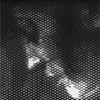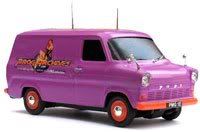Progarchives.com has always (since 2002) relied on banners ads to cover web hosting fees and all.
Please consider supporting us by giving monthly PayPal donations and help keep PA fast-loading and ad-free forever.
/PAlogo_v2.gif) |
|
Post Reply 
|
Page 123> |
| Author | ||||
MikeEnRegalia 
Special Collaborator 

Honorary Collaborator Joined: April 22 2005 Location: Sweden Status: Online Points: 20527 |
 Topic: Directional Audio Cables - myth or reality? Topic: Directional Audio Cables - myth or reality?Posted: June 04 2007 at 05:11 |
|||
|
Instead of the usual CD vs. vinyl argument ... let's talk about one of the most controversial audiophile theories: directional speaker cables. Unfortunately I cannot create polls in this section of the forum ... please if you post here, include a vote (yes - I believe in this theory, no - I don't believe in this theory), and I'll count the votes manually and update this post in a few weeks so hopefully we can find out more about the acceptance of the theory.

Edited by MikeEnRegalia - June 04 2007 at 08:47 |
||||
 |
||||
Dean 
Special Collaborator 

Retired Admin and Amateur Layabout Joined: May 13 2007 Location: Europe Status: Offline Points: 37575 |
 Posted: June 04 2007 at 05:51 Posted: June 04 2007 at 05:51 |
|||
|
The two individual wires of the cable that carry the signal is not unidirectional. What makes directional speaker cable directional is the screen (or shield or braid depending on which terminology you prefer). To reduce noise, this is normally earthed at the source end. Earthing both ends can lead to an earth-loop which may induce mains-hum. Using a screened cable also affects the impedance of the speaker as seen by the amp, most quality amps can handle this without problem, but on a cheaper amp this can be detrimental to the sound.
If you use screened cable without terminating the shield then you have wasted your money.
If this fails, try rubbing the cable with snake-oil.
so my answer: reality. Edited by darqdean - June 04 2007 at 09:05 |
||||
|
What?
|
||||
 |
||||
MikeEnRegalia 
Special Collaborator 

Honorary Collaborator Joined: April 22 2005 Location: Sweden Status: Online Points: 20527 |
 Posted: June 04 2007 at 06:03 Posted: June 04 2007 at 06:03 |
|||
|
Technically your answer is "myth", isn't it?
 With a shielded cable you would have at three wires (the two main ones which carry the signal and a third one connected to ground) instead of two, I don't see any difference to a standard two-wire cable. I mean, by reversing the direction of the cable don't change the shielding (the ground/earth connector is still at the amp). With a shielded cable you would have at three wires (the two main ones which carry the signal and a third one connected to ground) instead of two, I don't see any difference to a standard two-wire cable. I mean, by reversing the direction of the cable don't change the shielding (the ground/earth connector is still at the amp).Edited by MikeEnRegalia - June 04 2007 at 06:04 |
||||
 |
||||
Snow Dog 
Special Collaborator 

Honorary Collaborator Joined: March 23 2005 Location: Caerdydd Status: Offline Points: 32995 |
 Posted: June 04 2007 at 06:27 Posted: June 04 2007 at 06:27 |
|||
|
I vote...I don't give a crap.
|
||||
 |
||||
Dean 
Special Collaborator 

Retired Admin and Amateur Layabout Joined: May 13 2007 Location: Europe Status: Offline Points: 37575 |
 Posted: June 04 2007 at 06:27 Posted: June 04 2007 at 06:27 |
|||
|
^ No, I'll stick with Reality because of the way these cables are normally supplied (i.e. pre-terminated)
If you are making the cable yourself, fitting your own terminators and connecting the shield at the amp-end, then okay, it does not matter if the little arrow on the cable points towards the amp or the speaker, so to be pedantic, it's a Myth
|
||||
|
What?
|
||||
 |
||||
MikeEnRegalia 
Special Collaborator 

Honorary Collaborator Joined: April 22 2005 Location: Sweden Status: Online Points: 20527 |
 Posted: June 04 2007 at 06:38 Posted: June 04 2007 at 06:38 |
|||
|
^ you mean that cable has a shield connector only on one side? In that case I guess the cable is directional ...
 btw: As long as the speaker itself is not connected to the ground for that cable reversing the direction will simply mean to disconnect the shield from the ground. There's no shielding necessary anyway ... the signal is balanced, so interferences cancel themselves out, except for negligible asymmetries (negligible because the signal is very strong in relation to the interferences). btw: As long as the speaker itself is not connected to the ground for that cable reversing the direction will simply mean to disconnect the shield from the ground. There's no shielding necessary anyway ... the signal is balanced, so interferences cancel themselves out, except for negligible asymmetries (negligible because the signal is very strong in relation to the interferences). |
||||
 |
||||
Dean 
Special Collaborator 

Retired Admin and Amateur Layabout Joined: May 13 2007 Location: Europe Status: Offline Points: 37575 |
 Posted: June 04 2007 at 06:57 Posted: June 04 2007 at 06:57 |
|||
|
^ the signal is balanced in bridge-amps (eg vehicle ICE systems) and in some valve designs, but in most semiconductor amps the "Black" terminal is grounded, so the signal is un-balanced. However, as you say, the signal is very strong in relation to the interference and the network (amp-cable-speaker) is low impedance, so interference effects are negligible.
Personnally I think shielded speaker cables are a waste of time, effort and money, and any unshielded two-wire cables that are labeled as directional are fraudulent.
Mike, you haven't stated your view on this subject: Myth or Reality?
Edited by darqdean - June 04 2007 at 07:00 |
||||
|
What?
|
||||
 |
||||
mystic fred 
Special Collaborator 

Honorary Collaborator Joined: March 13 2006 Location: Londinium Status: Offline Points: 4252 |
 Posted: June 04 2007 at 07:05 Posted: June 04 2007 at 07:05 |
|||
|
as far as i've been told all cables are directional - interconnects, speakers, guitar lead, i thought i should follow the manufacturers instructions to get best results, but i am tempted one day to reverse them all and
|
||||
 Prog Archives Tour Van Prog Archives Tour Van 
|
||||
 |
||||
Sean Trane 
Special Collaborator 
Prog Folk Joined: April 29 2004 Location: Heart of Europe Status: Offline Points: 19626 |
 Posted: June 04 2007 at 08:27 Posted: June 04 2007 at 08:27 |
|||
|
In terms of Hifi cables and sound , you'll find little difference between high quality normal cable (this means no specified direction) and uni-directional cables, IMHO. And I haven't really seen a significant price difference between the two in specialized stores.
I have both sorts on different hifi and simply have never thought about making comparisons by unhooking the cables and exchanging them to compare.
Just to be certain , Mike!! you are aware that Unidirectional wires (this means they have an arrow pointing the way it should be cabled) are not speaker cables, but used between the Hifi elements, (but not the speakers). I could be wrong on this issue, but I have yet to hear of speaker cables that are unidirectional (unless you're speaking of connecting the red connector of amplifier to the red connector of speakers and the black to the black, which should ALWAYS be done anyway)
As for whether it is possible to make unidirectional cable, yes it is but this is feasible only at the foundry during the manufacturing process of the wire and its different alloys. Whether the connectors (end pieces) can be manufactured to be unidirectional, I have no doubt either. Part of my job is about testing different metals (but copper is not one of them) in their resistivity (not resistance as in Ohms, even if that does come in the process) and magnetism properties on the finished products as they age.
And as for ..... trying to reverse the direction on unidirectional cables , I don't care to try, either. I just have more important issues in life..... even if I have nothing to do for the next four hours. I have no doubt it would work worse if reversed, because they are manufactured to work in one direction. So I say reality and no myth. Whether this unidirection makes a real audible difference to another high-qual wire, I am much less positive, though.
Edited by Sean Trane - June 04 2007 at 08:33 |
||||
|
let's just stay above the moral melee
prefer the sink to the gutter keep our sand-castle virtues content to be a doer as well as a thinker, prefer lifting our pen rather than un-sheath our sword |
||||
 |
||||
MikeEnRegalia 
Special Collaborator 

Honorary Collaborator Joined: April 22 2005 Location: Sweden Status: Online Points: 20527 |
 Posted: June 04 2007 at 08:46 Posted: June 04 2007 at 08:46 |
|||
Why, myth of course. BTW thanks for enlightening me about the amp speaker outputs ... I didn't know that they're usually unbalanced.  |
||||
 |
||||
MikeEnRegalia 
Special Collaborator 

Honorary Collaborator Joined: April 22 2005 Location: Sweden Status: Online Points: 20527 |
 Posted: June 04 2007 at 08:51 Posted: June 04 2007 at 08:51 |
|||
|
||||
 |
||||
Dean 
Special Collaborator 

Retired Admin and Amateur Layabout Joined: May 13 2007 Location: Europe Status: Offline Points: 37575 |
 Posted: June 04 2007 at 08:52 Posted: June 04 2007 at 08:52 |
|||
|
Here is a reference to Speaker Cable polarity from the Van Damme website:
"These plaited conductors are then over-sheathed with a flexible transparent PVC jacket side by side in the same shotgun formation as the twin interconnect, and one conductor is marked with a polarity arrow. This arrow indicates the preferred direction of signal flow: from the amplifier to the speakers."
/edit: Which is a complete nonsense - there is no such thing as signal flow. The signal propagates down the conductor, but the current flow is a.c. - it goes in both directions - it is this fundamental error which is the basis for all these directional claims. Edited by darqdean - June 04 2007 at 08:55 |
||||
|
What?
|
||||
 |
||||
mystic fred 
Special Collaborator 

Honorary Collaborator Joined: March 13 2006 Location: Londinium Status: Offline Points: 4252 |
 Posted: June 04 2007 at 08:54 Posted: June 04 2007 at 08:54 |
|||
i have used two makes of speaker cable that claim to be "uni"directional, Hugues, "QED" made in UK and "Kimber" speaker cables made in USA, which i believe are marked from the point of manufacture.
|
||||
 Prog Archives Tour Van Prog Archives Tour Van 
|
||||
 |
||||
Dean 
Special Collaborator 

Retired Admin and Amateur Layabout Joined: May 13 2007 Location: Europe Status: Offline Points: 37575 |
 Posted: June 04 2007 at 09:35 Posted: June 04 2007 at 09:35 |
|||
|
Okay, now you've altered the topic subject to include all hi-fi interconnects, I've read back through what I wrote and it still applies (apart from a typo that I've since fixed
There are two types of small-signal interconnect: balanced and unbalanced. Balanced has two inner conductors which are the signal & return path and has an earthed external screen (eg XLR type cable) - unbalance cable has a single inner conductor (signal) and the outer screen is also used as the return path (eg RCA connectors). Neither are directional.
You can buy balanced cable with RCA connectors - these cables are psuedo-balanced, the screen and the "return" conductor are connected at source and the screen is left "open" at the receiving end. These cables are marked as being directional with the arrow pointing to the "open" end.
That is the technical explanation and in theory it is possible to tell the difference if you get the direction wrong, but for the carp I listen too I doubt I'd notice Edited by darqdean - June 04 2007 at 09:36 |
||||
|
What?
|
||||
 |
||||
MikeEnRegalia 
Special Collaborator 

Honorary Collaborator Joined: April 22 2005 Location: Sweden Status: Online Points: 20527 |
 Posted: June 04 2007 at 09:51 Posted: June 04 2007 at 09:51 |
|||
|
^ of course this type of cable is not what I mean ... directional cables in the world of audiophiles are usually cables which are supposed to be optimized for a particular direction on the material level - meaning that the same "wire" sounds differently depending on which direction you use.
|
||||
 |
||||
Dean 
Special Collaborator 

Retired Admin and Amateur Layabout Joined: May 13 2007 Location: Europe Status: Offline Points: 37575 |
 Posted: June 04 2007 at 09:52 Posted: June 04 2007 at 09:52 |
|||
|
Oh, in that case. Pure Smoke and Mirrors, Emperor's New Clothes, Snake Oil - i.e. MYTH.
|
||||
|
What?
|
||||
 |
||||
oliverstoned 
Special Collaborator 

Honorary Collaborator Joined: March 26 2004 Location: France Status: Offline Points: 6308 |
 Posted: June 04 2007 at 10:05 Posted: June 04 2007 at 10:05 |
|||
You'll hear that it's less good. |
||||
 |
||||
Sean Trane 
Special Collaborator 
Prog Folk Joined: April 29 2004 Location: Heart of Europe Status: Offline Points: 19626 |
 Posted: June 04 2007 at 10:16 Posted: June 04 2007 at 10:16 |
|||
Aside from the explanation Darqdean gave you about the AC signal!
Again Mike, this is where it is useful to see which cables you're talking about.
Indeed the speakers cable transport an AC-like signal to the speaker, but this one is riding on a slight DC current (needed to power up the speakers>> please don't tell me these are working on water and fresh air
With unidirectional cable between say your CD deck to your amp >> the info can only go one way and is not an AC (either O or 1), therefore only going one way anyway.
Fred, the two brand names you mention are unknown to me (as a matter of fact I don't know any cable manufacturer off hand or by memory
For my speaker cable (cut to the dimension I asked them and left bare), I had to mark the black side with a black marker and make sure that at the other end I marked the colour on the same side. So for my use since the cables comes from a 50m spool, only the connectors coud be unidirectional unless there are repeated arrows down the cable as well as colour markings down the whole lenght of the cable.
For me the most important quality for speaker cables is shielding (this is where the signal is the most vulnerable), and to make sure that they do not run alongside other cables >> never wind up your cables either, this produce capacitance and induction phenemenon, (this might appear a bit crazy , but even at these low tensions/power, best not taking chances. Edited by Sean Trane - June 04 2007 at 10:25 |
||||
|
let's just stay above the moral melee
prefer the sink to the gutter keep our sand-castle virtues content to be a doer as well as a thinker, prefer lifting our pen rather than un-sheath our sword |
||||
 |
||||
MikeEnRegalia 
Special Collaborator 

Honorary Collaborator Joined: April 22 2005 Location: Sweden Status: Online Points: 20527 |
 Posted: June 04 2007 at 10:24 Posted: June 04 2007 at 10:24 |
|||
|
^ why should there be an DC current required to "power up" the speakers? Essentially a speaker is an electrical magnet ... depending on the voltage of the signal the magnet attracts or repells the membrane (or rather the piece of metal attached to the membrane). If a speaker really needed DC current I'm sure it would simply get its own power supply.
And I'm also sure that the signals between the hi-fi components are AC too. You can't transport information on a DC connection ... unless you would do some kind of current modulation, which I have never heard of. Edited by MikeEnRegalia - June 04 2007 at 11:35 |
||||
 |
||||
Dean 
Special Collaborator 

Retired Admin and Amateur Layabout Joined: May 13 2007 Location: Europe Status: Offline Points: 37575 |
 Posted: June 04 2007 at 11:28 Posted: June 04 2007 at 11:28 |
|||
They are not working on water and fresh air - the water would be harmful.
There is no DC component in the speaker cable - it there was it would seriously damage your speakers. The Power Amplifier amplifies the music signal (I will refrain from calling it AC from now on) to such a level that it can drive the speaker coil.
(AC can power things - that's how washing machines and light bulbs work!)
Signal flow is not the same as current flow (I've said this before), If you hold a length of rope by one end and give it a flick, a single "wave" would travel along the rope, but nothing else would. In an electrical conductor electrons do not flow along the cable carring bits of music signal - they propagate the "information" from one electron to the next like the fibres in the rope did. Imagine a Newton's Cradle - swing the ball at one end and the ball at the opposite end bounces. (it's actually nothing like that - but this is as simple an analogy I could think of).
AC is not 1 or 0 - that is binary. AC is a voltage that cycles between postive and negative - for Mains electricity this happens at 50 or 60 times a second - for music it happens at the frequecy of the music being played.
The music signal really does Alternate between positive and negative, the Current flows in alternating directions in the conductor.
A unidirectional conductor would stop half this signal from getting through. That is called a diode.
Matched speaker cable lengths are a partial Myth.
Electronic signals travel down the speaker cables at aproximately two-thirds the speed of light (i.e. 200,000,000m/s) which is roughtly 5nS to travel 1 metre. For there to be a noticeable phase difference to audio signals the difference in lenght between two cables would need to be over 10000 metres (or 50ÁS).
There are impedance differences between unmatched cables that would be noticeable on inferior amplifiers - however you would not detect this on any mid to high-end amplifier.
|
||||
|
What?
|
||||
 |
||||
Post Reply 
|
Page 123> |
| Forum Jump | Forum Permissions  You cannot post new topics in this forum You cannot reply to topics in this forum You cannot delete your posts in this forum You cannot edit your posts in this forum You cannot create polls in this forum You cannot vote in polls in this forum |